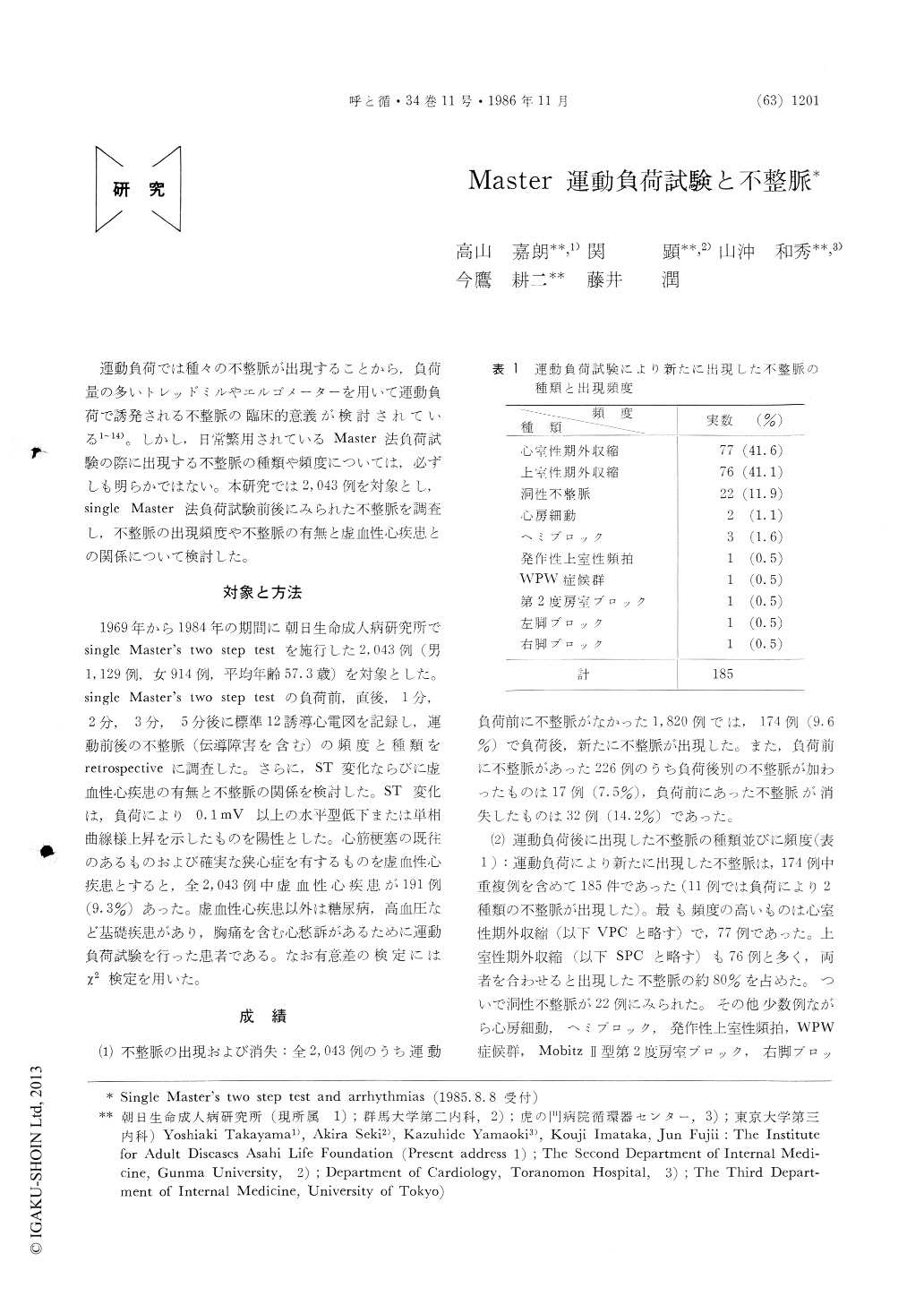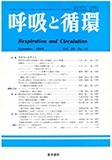Japanese
English
- 有料閲覧
- Abstract 文献概要
- 1ページ目 Look Inside
運動負荷では種々の不整脈が出現することから,負荷量の多いトレッドミルやエルゴメーターを用いて運動負荷で誘発される不整脈の臨床的意義が検討されている1〜14)。しかし,日常繁用されているMaster法負荷試験の際に出現する不整脈の種類や頻度については,必ずしも明らかではない。本研究では2,043例を対象とし,single Master法負荷試験前後にみられた不整脈を調査し,不整脈の出現頻度や不整脈の有無と虚血性心疾患との関係について検討した。
Exercise-induced or abolished arrhythmias were stu-died in 2043 patients (average age of 57.3) including 191 ones with ischemic heart disease who had performed the single Master's two step test. 185 arrhythmias appe-ared on the postexercise electrocardiograms (ECGs) in 174 of 1820 patients (9.6%) who had showed no arrhy-thmias on the resting ECGs and the preexisting arrhy-thmias were abolished in 32 of 226 patients (14.2%) who had showed various arrhythmias on the resting ECGs. The ventricular and supraventricular premature contractions were the most common exercise-induced arrhythmias, which appeared in 77 and 76 respectively of all 185 exercise-induced arrhythmias (41.6% and 41.1%) and other types of arrhythmias such as atrial fibrillation, hemiblock, supraventricular paroxysmal tachycardia, WPW syndrome and so on appeared in a small number of patients. The incidence of ischemic heart disease was significantly greater in patients with exercise-induced arrhythmias than in those without them (16.1%, v.s. 7.7%, p<0.01).

Copyright © 1986, Igaku-Shoin Ltd. All rights reserved.


